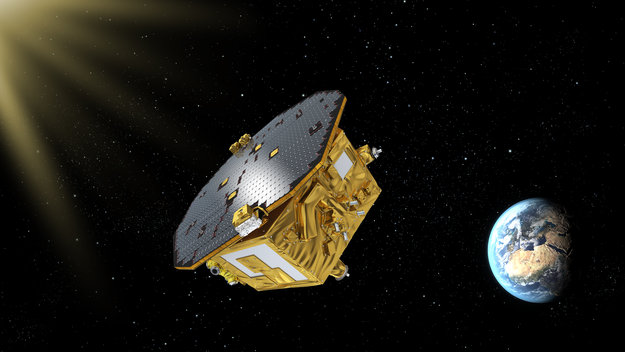LISA Pathfinder, a laboratory in space

LISA_Pathfinder_in_space_large
Gravitational waves in space
Recently, the first direct detection of these waves inaugurated the era of gravitational astronomy.A future observatory in space, sensitive to gravitational waves with longer wavelengths than those detected on the ground, would be an essential tool to exploit this new field of study by probing some of the most massive and powerful objects in the Universe.
Carlos F Sopuerta, researcher at Institute of Space Sciences (IEEC-CSIC) and coordinator of the LISA gravitational astronomy group explains that “LISA Pathfinder is designed to achieve the purest-known ‘freefall’, the extremely challenging condition necessary to build such an observatory”.
To do so, the team released two test masses – a pair of identical 2 kg gold–platinum cubes measuring 46 mm – inside the spacecraft and is now verifying that they are truly moving under the effect of gravity alone.
“This is crucial” says Sopuerta “even in space, there are forces capable of disturbing the cubes, including the radiation and wind from the Sun, and they need be isolated from all of these non-gravitational influences. To do so, LISA Pathfinder continually measures their positions”.
Science operations
Catalan researchers have a very important role in the LISA Pathfinder mission. They have designed the Data Management Unit (DMU), the onboard computer that controls the scientific experiments that have just started at the European Space Operations Centre of ESA in Darmstadt, Germany.
The researcher Lluis Gesa monitors daily tha hardware and the softwarse of the DMU. “This is a technic support for possible errors that can escape the purely scientific analysis and we will provide solutions or advice to help the scientific team”. Miquel Nofrarías has already begun the scientific experiments: “We started to induce thermal and magnetic forces over the cubes already in free fall and we are learning more every day about how this instrument with incredible precision works.”
LISA Pathfinder scientific mission officially began on March 1 and will run for six months.
